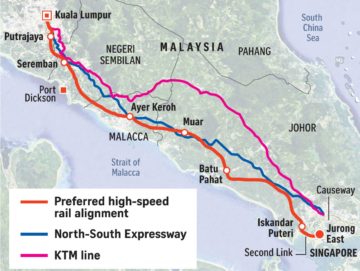
There is a good reason why high speed rail has been built only by the public sector in China and continental Europe – whilst being an engineering marvel, the project economics don’t stack up (Eurotunnel, anyone?). Taking the plane may not be as comfortable but it is cheaper to build / expand an airport and let the airlines do the rest. A major benefit of rail comes in the external form of real estate created along the route. This works in urban areas where the MRT in Singapore and the MTR in HK have been characterised as real estate companies which happen to run a railway – but it does not work over longer distances and where the more stations are built, the slower the travel time. And the travel times quoted understate door – to – door times when stations are out in the suburbs, Jurong East in the case of Singapore. HSR therefore needs huge amounts of government support and thus political will.
The new PM has undertaken to revisit all Malaysia’s contracts under China’s Belt & Road Initiative such as the $14 billion East Coast Rail but this is more fundamental than that. The Japanese, Korean and European contractors who were also bidding, not to mention the banking and capital markets, will be disappointed but tax payers will not.







